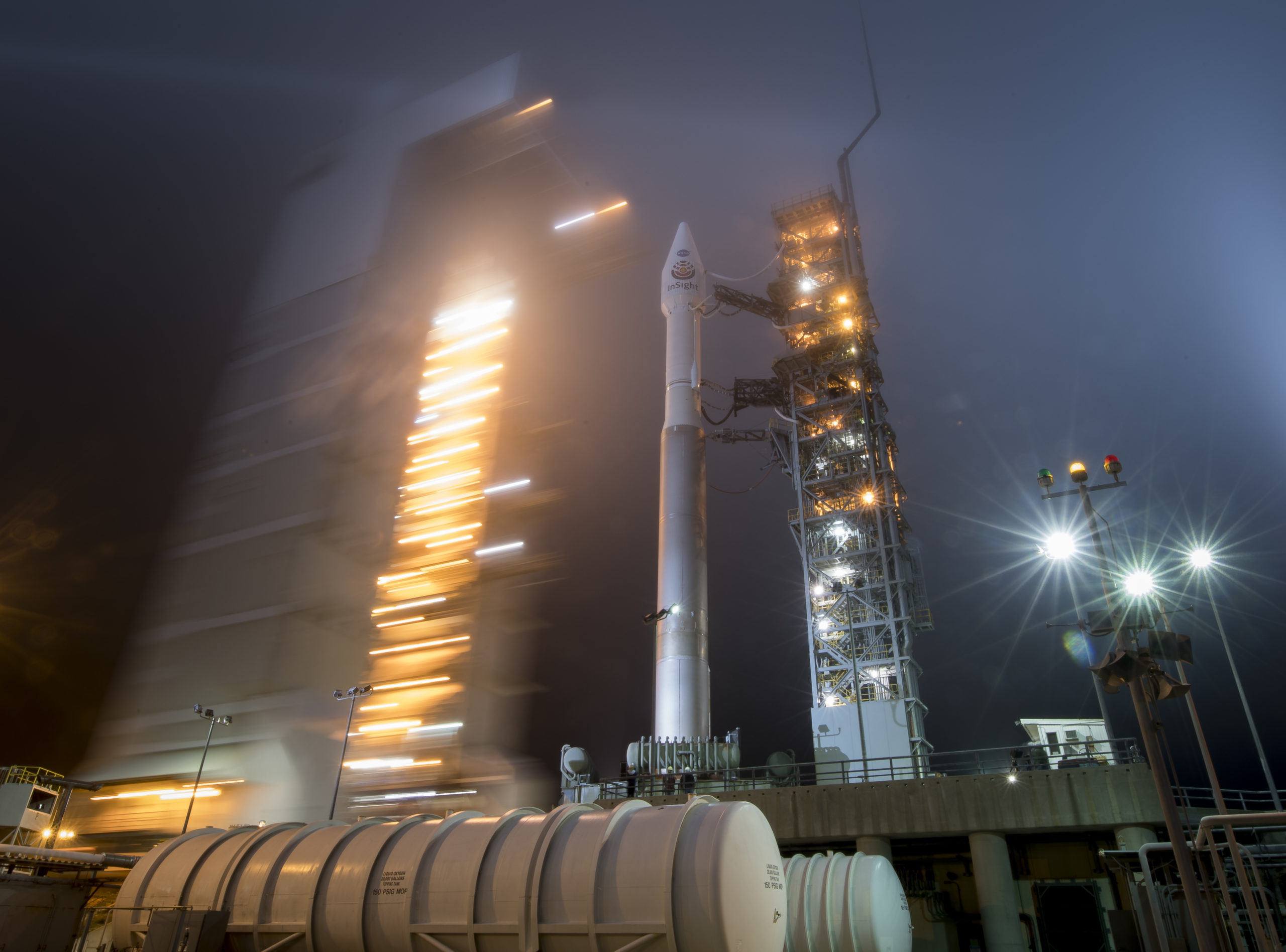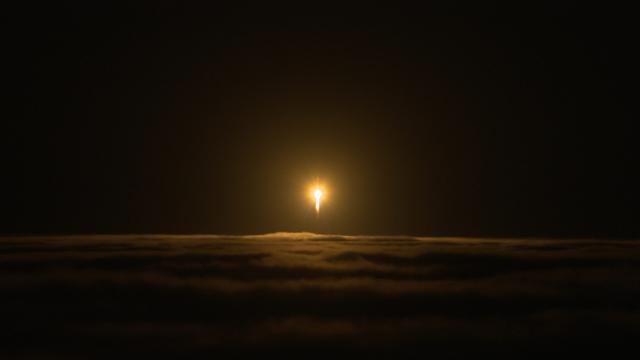On Saturday, for the first time, a rocket blasted off from the US West Coast to fling its payload on an interplanetary trajectory. Despite being at Vandenberg Air Force Base for Mars InSight’s historic launch atop an Atlas V rocket, I never saw the spacecraft before it tore free from Earth’s greedy grasp.
Mars InSight launch on 5 May 2018, from Vandenberg Air Force Base in California. I was below the fog and saw nothing. Photo: NASA / Cory Huston
I’ve been waiting to report this story since 2015, way back when I was writing obsessive inventories of every hole drilled into Mars (an 18cm depth record soon to be broken, hopefully, by the InSight lander’s heat flow probe).
Back then, engineers hadn’t yet spotted the slow leak in the vacuum system of InSight’s seismometer – a leak that ultimately pushed the mission’s launch from 2016 to this past weekend. (It’s fixed now!)
Considering InSight’s history of frustrating delays, it was an auspicious sign that the Atlas blasted off at the first possible moment of its launch window, at 9:05PM AEST on Saturday, and perfectly delivered Mars InSight and the accompanying two MarCO CubeSats exactly where they needed to be for the six-month cruise to Mars.

Rollback of the tower exposing the Atlas V rocket. Photo: NASA / Bill Ingalls
Vandenberg is known for its fog, so I prepared to be content soaking in the rich rumble and perhaps to sigh, awestruck, at the streak of rapidly receding flame as the rocket climbed above the fog deck. When the first launch weather forecast cited only a 20 per cent chance of visibility, I shrugged in wry acceptance – after all, I have a lot of practice, as fog has dominated every launch I’ve experienced.
Once upon a time, I attended university in this odd little notch of California’s coast, where the oceans are to the south, not west, a quirk that perpetually disorients yet also lets NASA launch rockets without endangering residents. My classmates and I climbed the mountains to get above the fog to watch launches from afar.
Later, as a reporter, the launches I covered (all from Vandenberg) were audio-only, swathed in mists, in which the rocket’s bone-reverberating roar was the only indication of the terrific forces at play.

Our incredible view from the Vandenberg press site was fog, with or without blinding flood lights. Photo: Mika McKinnon
But this was the first time I’ve been this close yet unable to see the rocket at all. Not on the pad, impatiently counting down the days. Not peeking through binoculars after carefully navigating sand dunes of the local bird sanctuary without disturbing any nesting plovers. Not during the tower rollback, which left the rocket suddenly exposed and alone awaiting final fuelling and checks.
The blanket of fog was so complete that even as the rocket blasted from the ground, with me craning my head to chase its grumble (despite knowing the speed of sound kept me lagging behind its actual path), I never got even a fleeting glimpse of it.
For me, this rocket became a geophysical experience. In geophysics, we determine subsurface structures not by directly observing them, but by inferring characteristics based on how they alter the signals that pass through them. I never saw this rocket, yet I know it was on the ground and then thundering through the air.
This is also how InSight will become the first lander to probe the interior structure of Mars. By measuring thermal gradients and faint seismic quivers of Marsquakes, InSight will hopefully teach us what’s going on beneath Mars’ dusty surface.

My view of the Mars InSight launch. Photo: Mika McKinnon
I wasn’t the only one feeling this way. In the aftermath of launch, with everyone punch-drunk on giddiness, sleep deprivation and too much coffee, it was all anyone could talk about. The rocket’s roar was the seismic wave, and we were InSight, tracking the hidden structure of a rocket behind the cloud.
Time and time again, people brought up the metaphor in conversation: Geophysics made real through our shared experience of hearing a record-making rocket launch that none of us could see.
Geophysics is the dark arts of the geosciences, a field where every collection of measurements points to seemingly infinite possible geological configurations. Choosing the best explanation is a mix of context clues, experience, intuition, and a fair amount of luck.
When the InSight lander takes up residence on the surface of Mars and drills 5m into its surface, scientists will have a new trove of data to make sense of – data that will hopefully reveal how rocky planets like Earth and Mars form and change over time.
For now, we can relax and wait: The spacecraft are set to arrive at Mars on 26 November 2018.
